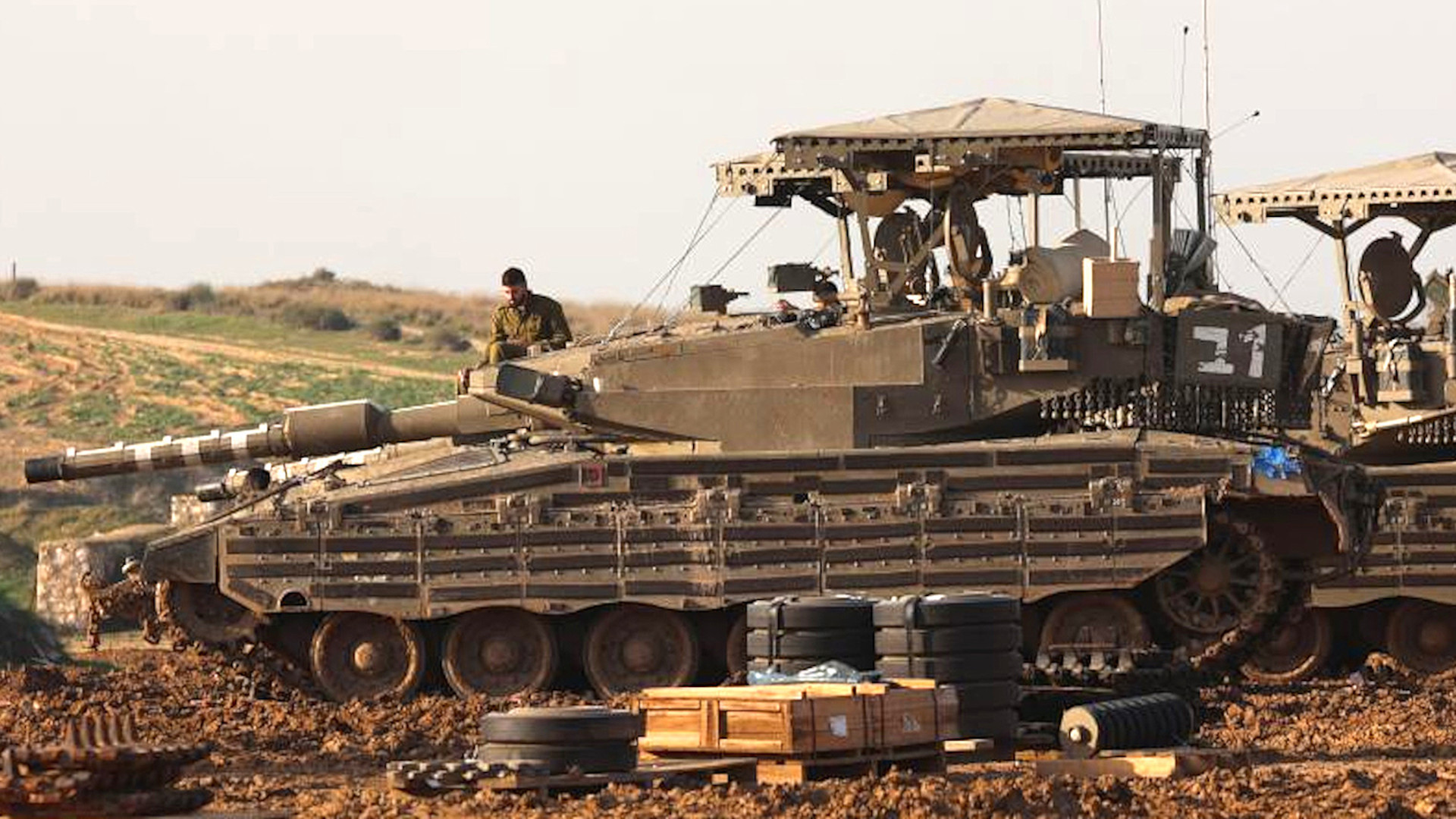Israeli Merkava Mk 3 tanks are emerging with improved anti-drone armor screens on top of their turrets and hulls covered in strips to prevent improvised bombs with magnets from sticking to them. The new defensive features have transformed the outward look of these tanks and direct reflect the diverse array of threats their crews have been facing in the ongoing conflict in the Gaza Strip.
Chinese state media outlet Xinhua recently published pictures of Israeli forces operating around Gaza that show multiple Merkava Mk 3s with the apparent new overall defensive configuration. This comes as the Israeli military has been shifting to lower-intensity operations against Hamas and other Palestinian militant groups, and demobilizing thousands of reservists, in recent weeks. The Mk 3 version of the Merkava is in the process of being phased out of the Israel Defense Forces (IDF) and reserve units are now the primary operators of this type.
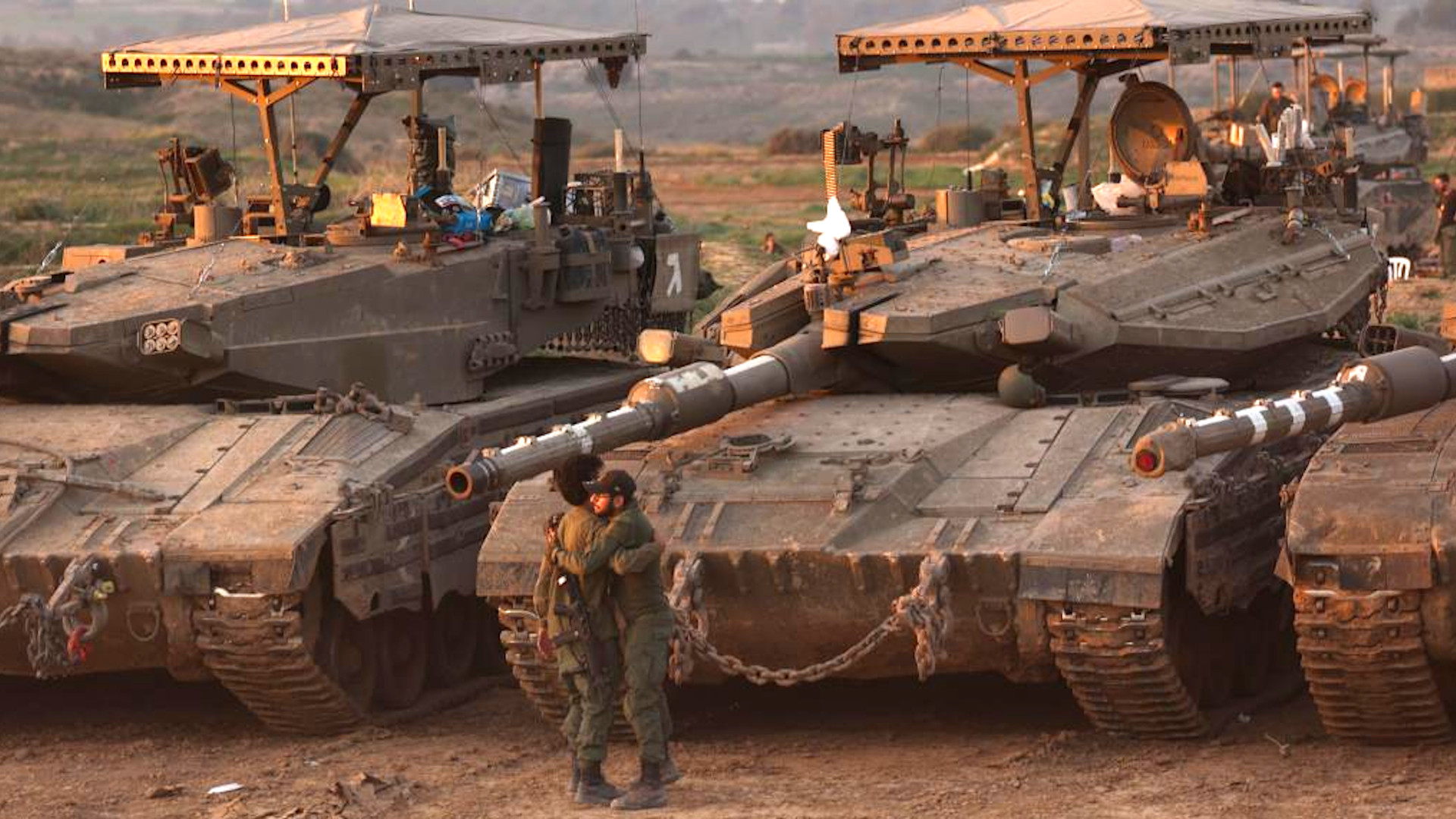
Since the conflict in Gaza started last October, Mk 3 and Mk 4 Merkavas have been seen with different types of anti-drone armor screens fitted to their turrets. Some of them have also been spotted with the armor skits over their tracks covered with panels or stripes of rubber (or rubberized) or other material designed to prevent the attachment of improvised explosive devices via magnets.
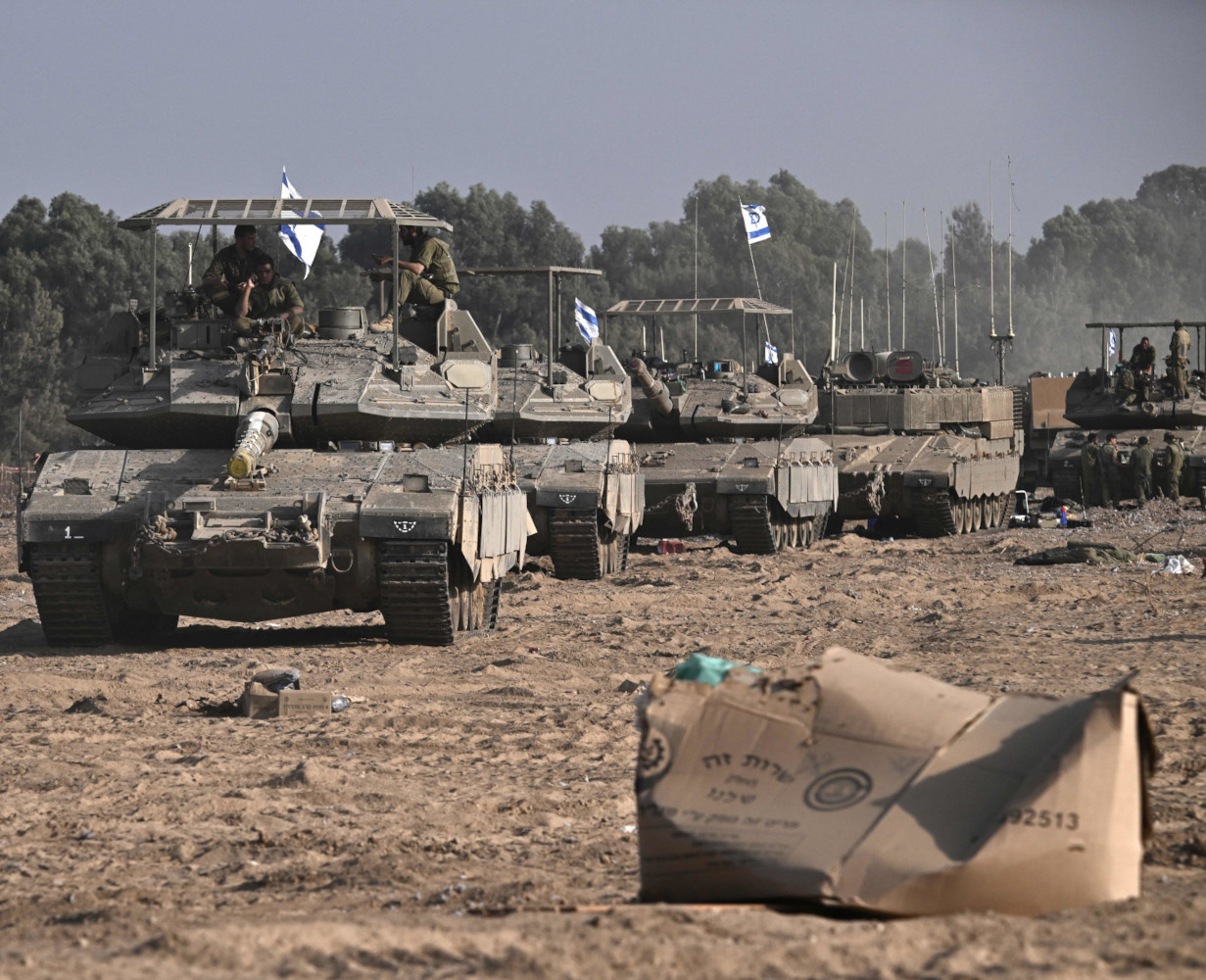
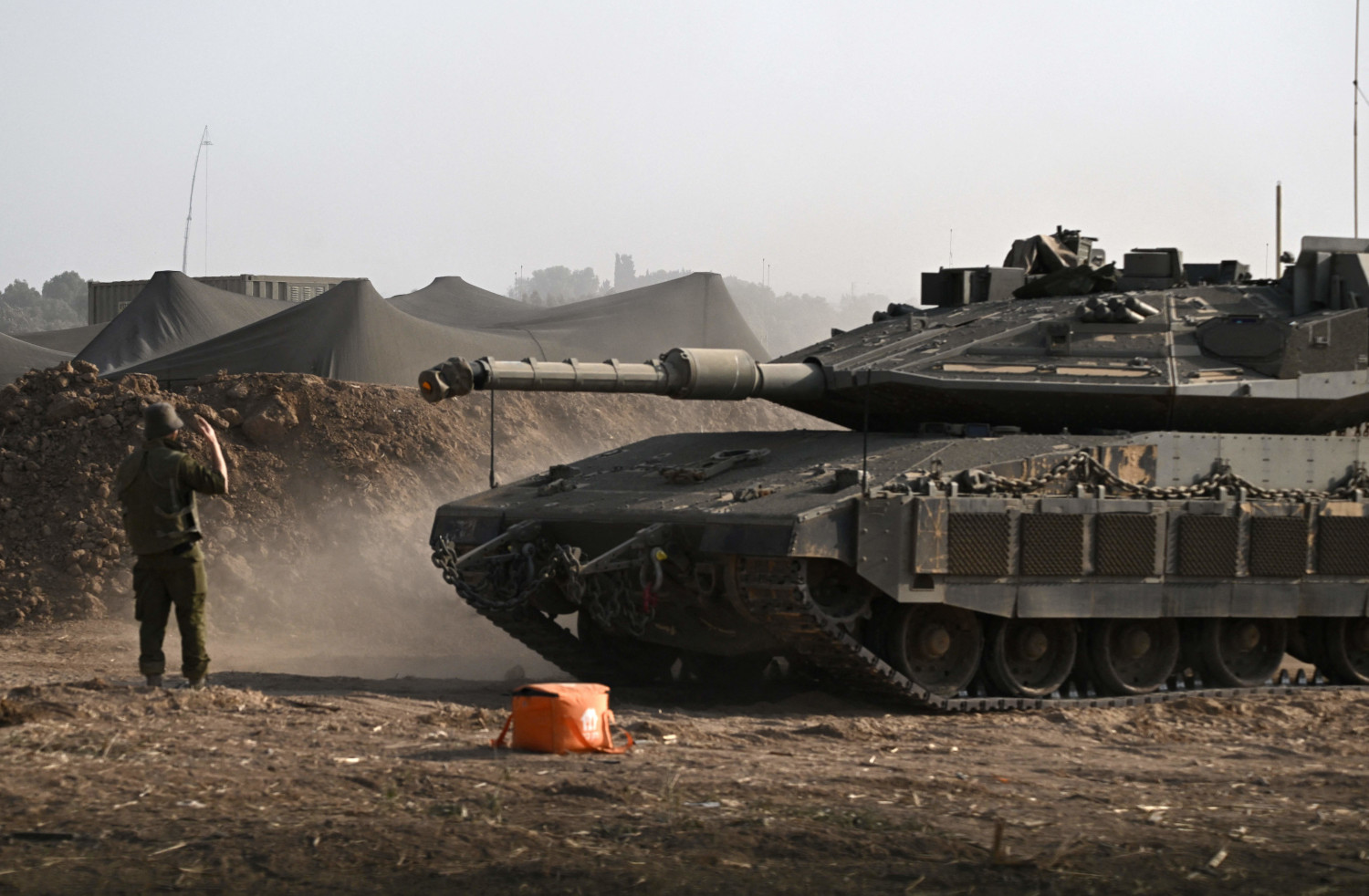
However, the Mk 3s seen more recently have a much more comprehensive and standardized-looking arrangement.
For one, the top-mounted anti-drone armor screens have an outright production-standard look to them, though it is unknown where they are being produced. They have sturdier supports and framing on top compared to what has been seen in the past. There are also wires strung between the roof of the screens and the tops of the tanks’ turrets. This would help prevent wires and other similar hazards from getting snagged or harming crew members standing up in their hatches.
Also, unlike armor screens previously seen on Merkavas and other Israeli armored vehicles, the new design has a peaked, tent-like top. Armor like this is primarily designed to protect against drones, including kamikaze types and ones designed to drop small munitions. It can also help shield against other threats from above, including grenades or improvised explosive devices thrown from roofs or upper story windows of nearby buildings. A tent shape would help further direct anything that lands on the screen away from the tank.
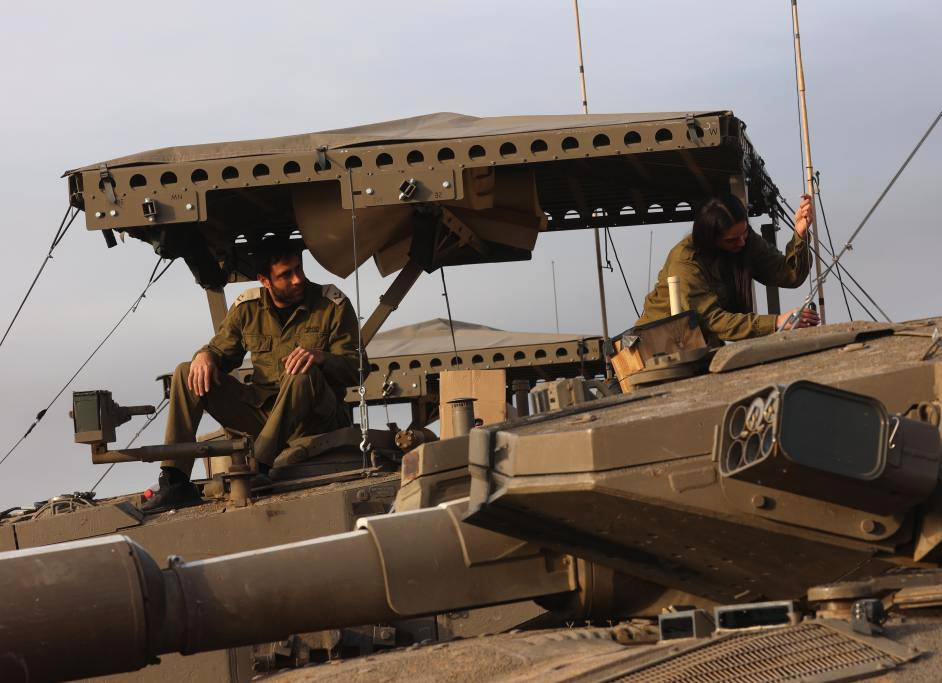
The Merkava Mk 3s recently observed near Gaza also have significantly more extensive rubberized anti-magnet stripping than has been previously seen. The strips now extend above the tank’s armor skirts onto other parts of the sides of the hull. This does not extend to the top of the front of the hull, but its unclear whether it wraps around the rear from the pictures that are available.
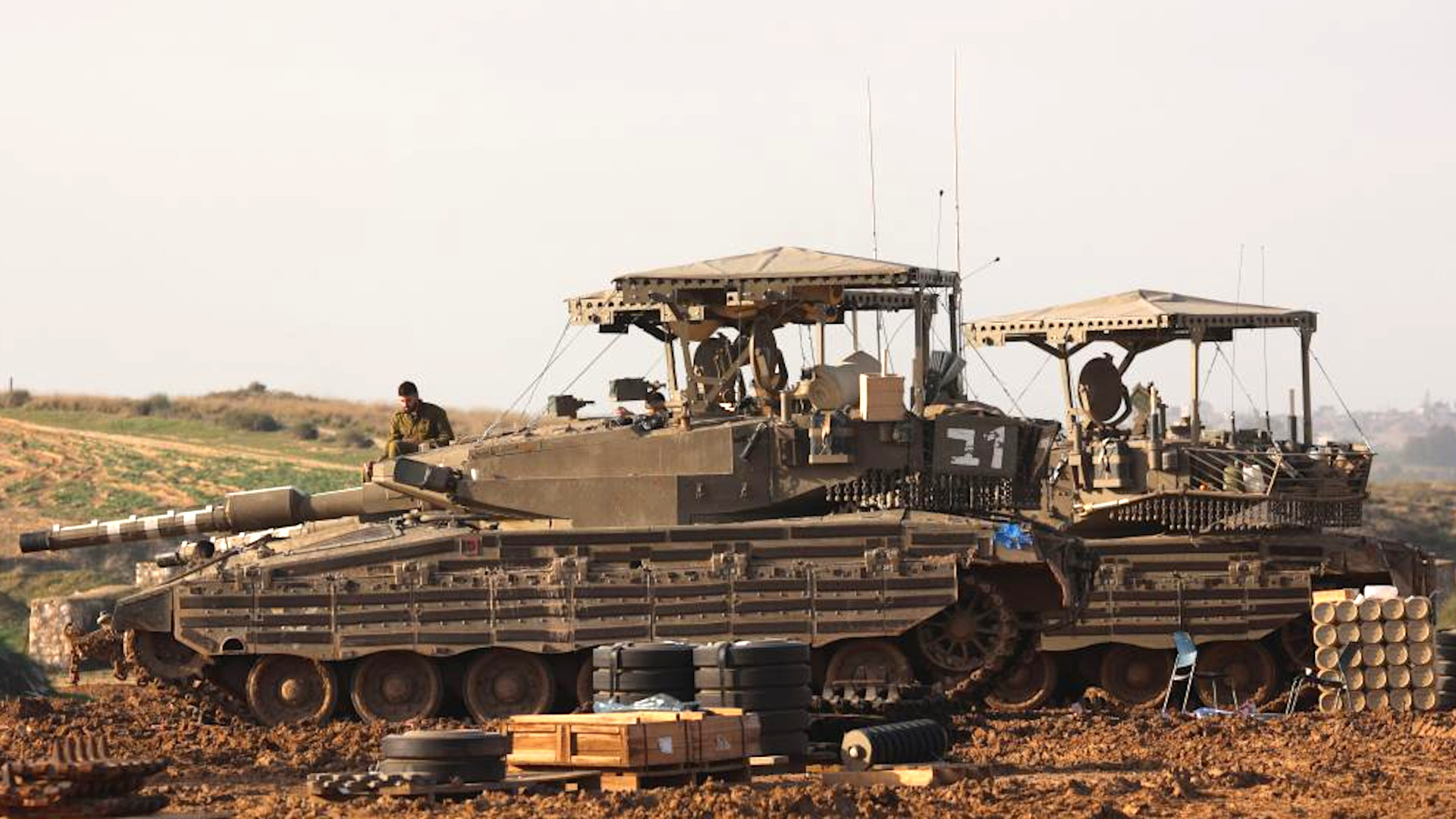
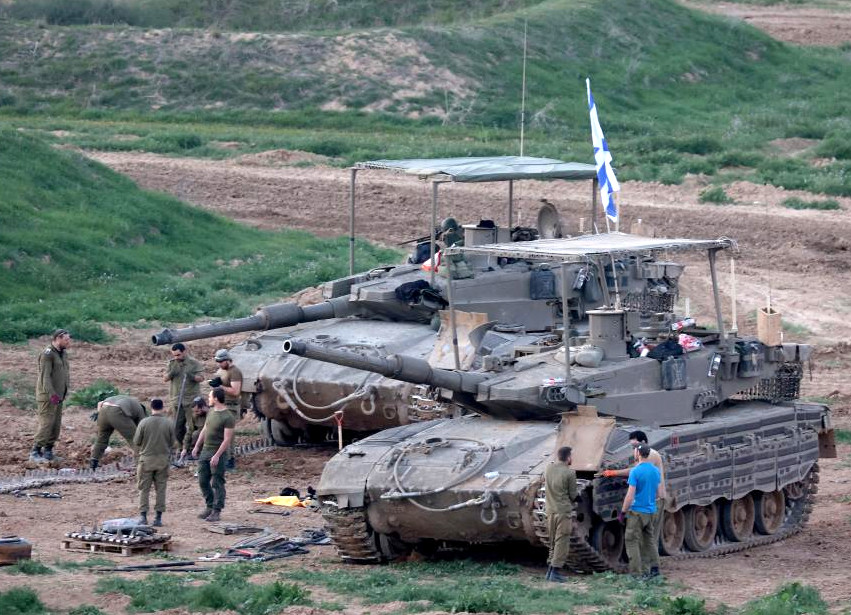
In terms of other defenses, the Mk 3 version of the Merkava notably lacks the Trophy hard-kill active protection system that is found on newer Mk 4 versions. Trophy is primarily designed to protect against anti-tank guided missiles and other infantry anti-armor weapons, including rocket-propelled grenades. You can learn more about Trophy, which has shown its value in the current fighting in Gaza, here.
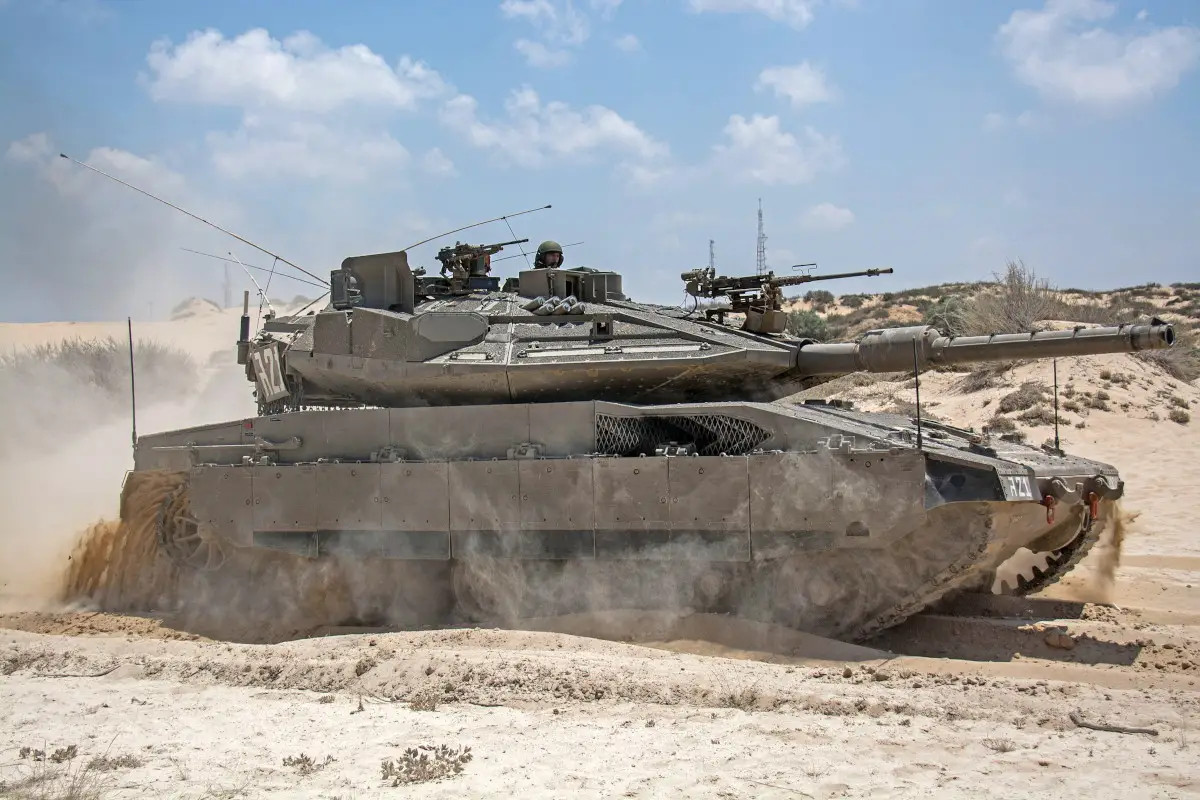
The Merkava Mk 3 does have smoke grenade launchers at the front of the turret that it can use to help conceal itself. These tanks also have a built-in 60mm mortar that can be used to fire smoke and other types of rounds, as you can read more about here.
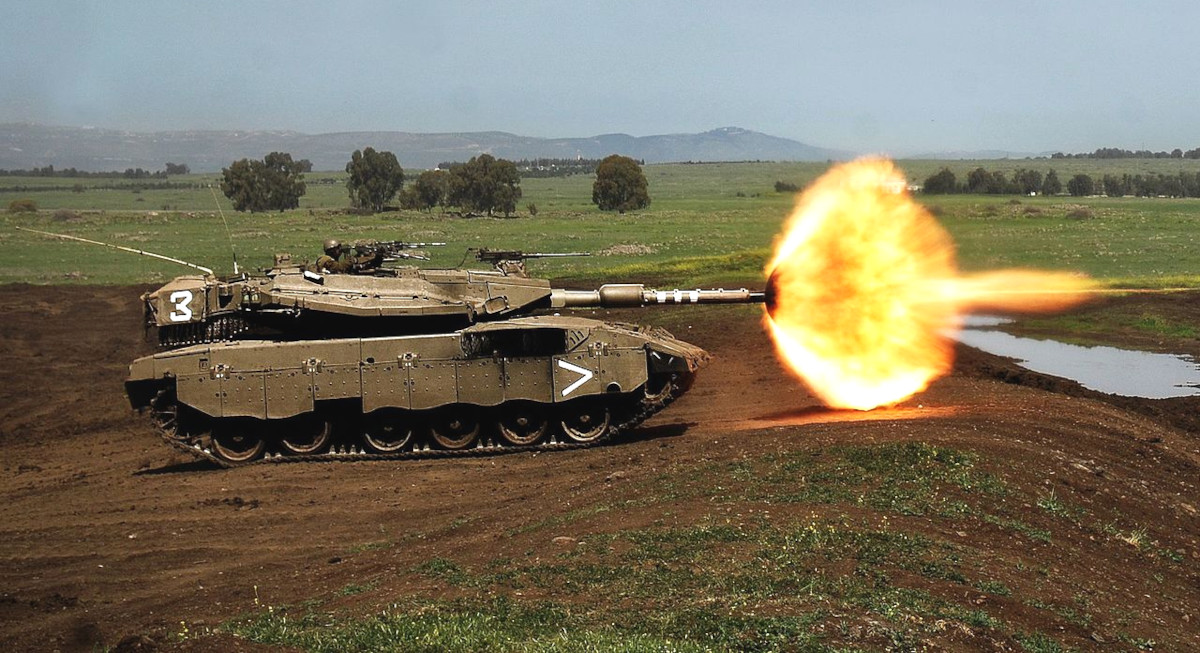
Its remains to be seen whether similar improved defensive features will also emerge on newer Merkava Mark 4 variants, but it seems very possible, if not probable.
Regardless, the Mk 3 Merkavas with the additional defensive features speak directly to Israel’s experiences in the current conflict in Gaza. Much of the fighting has taken place in dense urban environments. This has, in turn, given Palestinian militants ample opportunities to attack Israeli tanks and other armored vehicles from above with a variety of weapons.
The appearance of add-on armor screens, also commonly called “cope cages,” on Merkavas and other Israeli armored vehicles starting last year had already spoke to the ever-growing threat posed by drones on and off traditional battlefields. Hamas notably used weaponized drones to drop improvised munitions on Israeli tanks and other key targets as part of its brazen terrorist attacks on southern Israel on October 7, 2023, which precipitated the current conflict.
Palestinian militants have been making significant use of manually emplaced improvised explosive devices in attacks on tanks and other armored vehicles in the current conflict in Gaza. This includes designs with strong magnets that allow them to stick to their targets.
Hamas has released videos showing individuals placing improvised munitions on the upper and rear hulls of Israeli tanks and other armored vehicles, underscoring the need to extend anti-magnet treatments beyond just places like a Merkava’s armor skirts.
Attacks using these kinds of improvised munitions have also taken advantage of the heavily urban nature of the fighting in Gaza, as well as Hamas’ extensive network of tunnels. All of this gives militants various avenues to sneak up on tanks and other armored vehicles. Those vehicles can be especially vulnerable if their crews are ‘buttoned up’ inside with their hatches closed, reducing their situational awareness, and there is a lack of supporting infantry on the ground nearby.
The new look on these Merkava Mk 3s reflects trends that go beyond the conflict in Gaza. Russian tanks were the first to appear with add-on armor screens on their turrets in the lead-up to the all-out invasion of Ukraine in 2022. Cope cages have now become a fixture on both sides of the conflict in Ukraine. Their use is still expanding, including to non-state actors like Mexico’s drug cartels.
The extent of drone warfare in Ukraine, especially the use of low-cost maneuverable first-person view (FPV) kamikaze drones, has also led to the employment of more and more extensive cope cage designs, as well as nets and other defense measures. The War Zone recently did a deep dive into how hard-kill active protection systems like Israel’s Trophy could be an important element of counter-drone defenses for tanks and other armored vehicles going forward.
When it comes to magnetized improvised bombs for use in attacks on armored vehicles, this threat is now decades old, tracing back at least to World War II. Though the munitions like this can be risky to employ given how exposed the individuals emplacing them have to be, the conflict in Gaza has shown that they continue to be a real threat, especially in the tight constraints of urban locales. Many armed forces around the world, including the U.S. military, expect fighting in large, built-up areas to be a key feature in conflicts going forward.
Altogether, Israel’s recent experiences could very well impact decisions other military forces around the world make when it comes to improving the survivability of their tanks and armored vehicles in the future. As already noted, top-mounted armor screens predate the current conflict in Gaza and their use worldwide is already growing in light of the increasingly ubiquitous drone threat.
If nothing else, the fighting in Gaza is significantly changing the look of Israel’s Merkava tanks.
Contact the author: joe@thedrive.com
